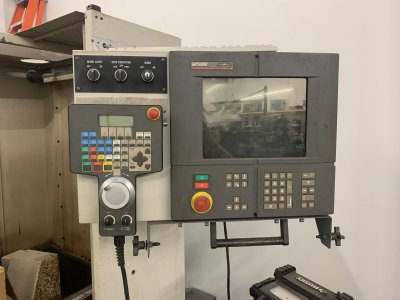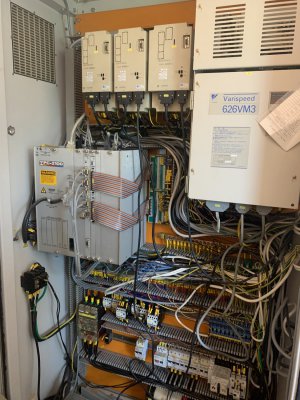- Joined
- Feb 25, 2021
- Messages
- 3,129
There are a whole lot of different choices in this as far as CNC control. I'm hoping when I'm eventually done to have a machine with ATC capability, etc, as it has the hardware for that. The existing electrical cabinet is 8'h x 4'w, plus the front console.


I've checked that these servo controllers are 10v analog controllable, including the spindle. The PC-2100 pictured is the old Siemens acramatic controller. I'll need to map out the rest of this before digging into it. I.e, I haven't really started on this yet. I'd like to try replacing the acramatic and break out panels without completely redoing everything but that may be wishful thinking.
Obviously I get started on too many projects
Mesa card availability (FPGA/chip shortage) has kept this one on hold.
The Mesa card can handle up to 6 analog servos, plus 16 discrete inputs and 6 outputs. It also expands via breakout boards for additional I/Os. They have breakout boards specifically for front panel controls. Haven't decide yet, will be interesting to see if I can map the current front panels into one of those, or just go new.


I've checked that these servo controllers are 10v analog controllable, including the spindle. The PC-2100 pictured is the old Siemens acramatic controller. I'll need to map out the rest of this before digging into it. I.e, I haven't really started on this yet. I'd like to try replacing the acramatic and break out panels without completely redoing everything but that may be wishful thinking.
Obviously I get started on too many projects
Mesa card availability (FPGA/chip shortage) has kept this one on hold.
The Mesa card can handle up to 6 analog servos, plus 16 discrete inputs and 6 outputs. It also expands via breakout boards for additional I/Os. They have breakout boards specifically for front panel controls. Haven't decide yet, will be interesting to see if I can map the current front panels into one of those, or just go new.
Last edited:

